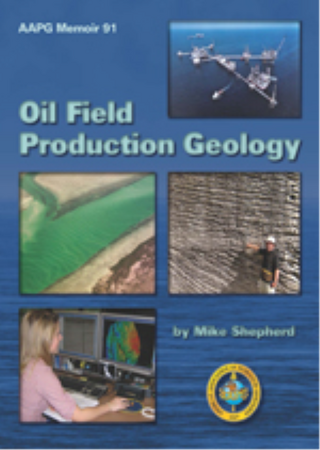Difference between revisions of "Data: sources"
(Created page with "'''THIS PAGE IS UNDER CONSTRUCTION''' {{publication | image = Oil-field-production-geology.png | series = Memoirs | title = Oil Field Production Geology | part ...") |
|||
| Line 33: | Line 33: | ||
* seismic data | * seismic data | ||
| + | ==Mud logging data== | ||
| + | The mud loggers on the rig site will monitor the drilling parameters during the well operation, and these are summarized graphically as a mud log. The mud log will include a lithology log. This is a depth plot showing in graphical form the percentage of the various lithologies in each cutting sample recovered while drilling the wellbore. A written description will be made for the lithology of the drill cuttings. Accompanying the lithology log is a record of the rate of penetration of the drill bit. This is an indication of lithology; sandstone is normally drilled faster than shale for instance. Any drilling problems encountered or changes in the drilling parameters will be reported in the margins of the mud log. The presence of oil shows will be noted. The gas returns and gas chromatography analysis are monitored and graphed against depth. High gas returns are a sign that a hydrocarbon reservoir may have been drilled. Significant concentrations of the higher alkanes on the gas chromatograph can indicate that an oil zone has been penetrated. The mud log is used as a first pass, qualitative indication of reservoir presence and quality. A more detailed and accurate representation will be available once wireline logs have been run and interpreted. | ||
| + | |||
| + | The mud loggers also collect bags of rock cutting samples at regular intervals while the well is being drilled. These may be used later for biostratigraphic and lithological analysis (Whittaker, 1992). | ||
Revision as of 17:43, 2 June 2015
THIS PAGE IS UNDER CONSTRUCTION
| Oil Field Production Geology | |

| |
| Series | Memoirs |
|---|---|
| Part | The Geological Scheme |
| Chapter | Sources of Data |
| Author | Mike Shepherd |
| Link | Web page |
| PDF file (requires access) | |
| Store | AAPG Store |
A large amount of data is available to the production geologist for reservoir evaluation. Much of the data will have been expensive to acquire, particularly if obtained from wells offshore. For instance, core taken from a drilling operation on an offshore drilling rig may have cost more than a million dollars to recover. There is an obligation to take good care of the data and to make sure that the information is accessible, either as well-organized paper data files or as data on a computer shared drive. Data files stored on a computer should be labeled with the originator's initials, a date, and some idea of the significance of the data, e.g., "MS August 31, 2008, final top reservoir depth map." Well files should be compiled with all the available data collected on a well-by-well basis. Good data management can make all the difference between a project that is well organized and effective, and one that is disorganized and inefficient.
Obtaining data in an oil field environment is expensive; therefore, it is necessary to justify the economics of gathering the information. In the early stage of field life, the value of information is enormous; the data are essential for reservoir evaluation. Later on in field life, it becomes more important to justify the expense of the data. The new information should be gathered on the basis that it significantly improves the project value and reduces the company's investment risk (Gerhardt and Haldorsen, 1989).
Types of data
A production geologist will use data from a variety of sources. These include:
- mud logging data
- core data
- sedimentology and petrography reports
- outcrop analogs/modern depositional environments
- wireline-log and logging-while-drilling (LWD) data
- production-log data
- well-test data
- fluid samples
- production data
- seismic data
Mud logging data
The mud loggers on the rig site will monitor the drilling parameters during the well operation, and these are summarized graphically as a mud log. The mud log will include a lithology log. This is a depth plot showing in graphical form the percentage of the various lithologies in each cutting sample recovered while drilling the wellbore. A written description will be made for the lithology of the drill cuttings. Accompanying the lithology log is a record of the rate of penetration of the drill bit. This is an indication of lithology; sandstone is normally drilled faster than shale for instance. Any drilling problems encountered or changes in the drilling parameters will be reported in the margins of the mud log. The presence of oil shows will be noted. The gas returns and gas chromatography analysis are monitored and graphed against depth. High gas returns are a sign that a hydrocarbon reservoir may have been drilled. Significant concentrations of the higher alkanes on the gas chromatograph can indicate that an oil zone has been penetrated. The mud log is used as a first pass, qualitative indication of reservoir presence and quality. A more detailed and accurate representation will be available once wireline logs have been run and interpreted.
The mud loggers also collect bags of rock cutting samples at regular intervals while the well is being drilled. These may be used later for biostratigraphic and lithological analysis (Whittaker, 1992).